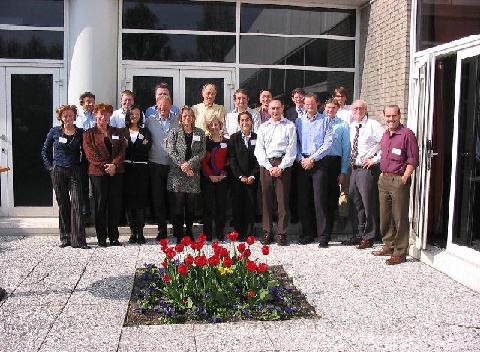EUMITOCOMBAT International Workshop – 1st Plenary Meeting
The EUMITOCOMBAT project is a Sixth Framework Programme Integrated Project granted by the European Commission and is entitled “Rational Treatment Strategies Combating Mitochondrial Oxidative Phosphorylation (OXPHOS) Disorders” (Contract No LSHM-CT-2004-503116).
The EUMITOCOMBAT consortium (www.eumitocombat.org) consists of 12 participating universities/instituteswith 21 scientific group leaders from 9 different European countries. EUMITOCOMBAT will combine mitochondrial research expertise into one, pan-European Consortium, aiming at an understanding of the underlying basic molecular mechanisms of OXPHOS disease and at the eventual development of treatments for these devastating disorders. The official starting date of the EUMITOCOMBAT project is the 1st July 2004 and the duration shall be 48 months.
Workshop
Almost one year after the start of the project and the kick off meeting (130th ENMC International workshop) a second meeting was organised from 2-3 June 2005 in Naarden: 1st Annual Eumitocombat Plenary Meeting.
The workshop wasa plenary meeting open to all researchers involved in the EUMITOCOMBAT consortium. More than fifty participants from Belgium, Czech Republic, Finland, France, Germany, Italy, the Netherlands, Spain, Sweden and the United Kingdom met in Naarden. The most important goal during this meeting was to present and review the progress of the scientific work. Therefore each of the researchers involved gave a presentation of the research work within their action line (starting date, progress, eventual deviations, deliverables, etc.). The meeting was closed with a discussion between the research leaders (Consortium Council and Consortium Board) about the main conclusions and consequences for the next 18 months of project period. During this meeting also the scientific officer of the EC as well as the external reviewer were present.
At the same time of this first plenary meeting, the meeting of the Scientific and Ethical Advisory Committee was organised. The members who attended discussed the content of the ethical and social issues arising within the EUMITOCOMBAT project.
Participating universities/institutes
Participants from the following universities/institutes attended the meeting:
Academy of Sciences of the Czech Republic (ASCR), Czech Republic; Charles University (CU), Czech Republic; European Commission (EC), Belgium; European Molecular Biology Laboratory (EMBL), Germany; EPPOSI, the Netherlands; Institut National de la Santé et de la Reserche Médicale (INSERM), France; Karolinska Institute (KI), Sweden; Lancaster University, CESAGen, United Kingdom; Medical Research Centre (MRC), United Kingdom; National Institute of Neurology “C. Besta” (INN), Italy; Radboud University Nijmegen Medical Centre (UMCN), the Netherlands; University of Bari (UBAR), Italy; University of Bologna, Italy; University of Newcastle (UNEW), United Kingdom; University of Tampere (UTA), Finland; University of Zaragoza (UNIZAR), Spain.
Contact
Project Management Team EUMITOCOMBAT University Medical Centre Nijmegen435 – Dept. of Paediatrics PO Box 9101, 6500 HB Nijmegen, The Netherlands
Tel.: +31-24-361 91 26 / 361 94 70
Fax: +31-24-361 64 28







